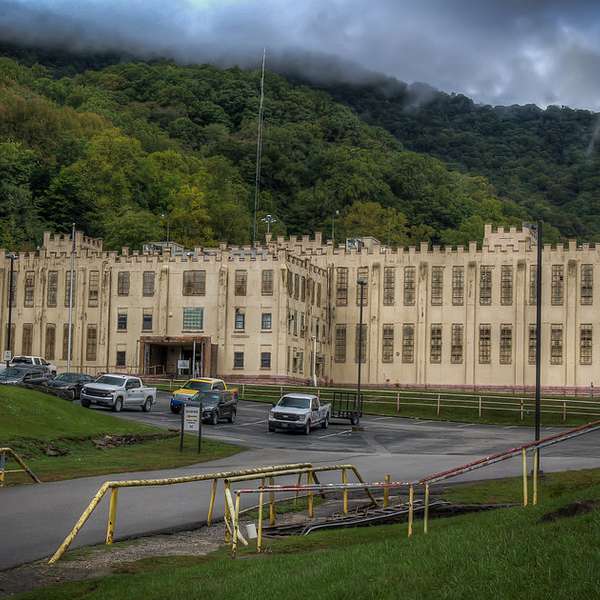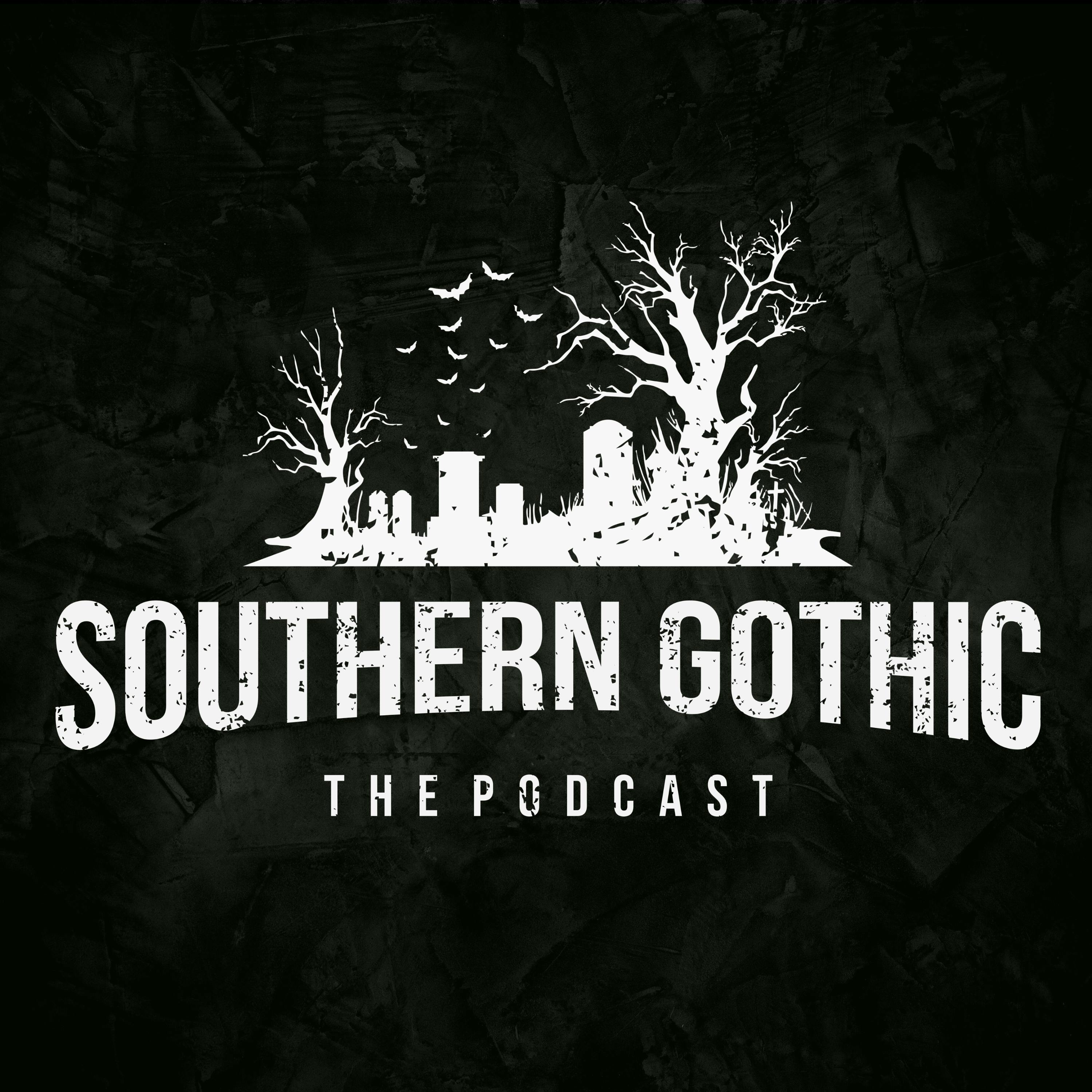
Tennessee Ghosts and Legends
Join me on a journey through Tennessee's mysterious and haunted past! Each season will be comprised of ten episodes you don't want to miss. You'll hear about some of the volunteer state's more famous and lesser known hauntings, and learn the local lore behind the legend. I am your host, Lyle Russell, and this is Tennessee Ghosts and Legends!
Tennessee Ghosts and Legends
Episode 7: Brushy Mountain State Penitentiary
Take a stroll through the haunted, sordid, and violent history of Tennessee's long-time maximum security prison, Brushy Mountain State Penitentiary! Learn about the strange happenings and recorded paranormal encounters in one of Tennessee's most haunted sites.
Welcome to the Tennessee Ghosts and Legends Podcast. My name is Lyle Russell. I am your host, and I love a good ghost story. On today’s episode, we’ll discuss some of the frightening tales told by the guards, employees and inmates who spent time for one reason or another behind the haunted walls of the Brushy Mountain State Penitentiary. Due to descriptions of violent crimes from the prison, listener discretion is advised.
The Legend:
During the Reconstruction period following the American Civil War, East Tennessee saw a boom in construction primarily based around its rich coal mines and rapid railroad expansion. As with any mining prospects, the most remote and hard to reach areas were the richest in resources. With that limited geographical access, mining companies would house their workers near the mine to increase operational efficiency. They would also provide “company stores”, where miners could purchase goods and sundries, often at inflated prices and leaving the worker owing more to the company for supplies than they actually earned in wages; a debt they could never escape.
Tennessee Ernie Ford’s song, “Sixteen Tons.” One stanza says:
If you see me comin', better step aside,
A lotta men didn't, a lotta men died.
One fist of iron, the other of steel,
If the right one don't get you,
Then the left one will.
You load 16 tons, what do you get?
Another day older and deeper in debt.
St. Peter, don't you call me 'cause I can't go,
I owe my soul to the company store.
The sixteen tons he refers to is the amount of coal mined by a miner in a day, yet whatever was harvested was never enough to dig the miner out of debt to the mining company. His lyrics paint a picture of the type of person who would work these mines; their toughness, swagger, and an eager willingness to use their fists to solve a dispute. It also tells us that at the end of the day, the miner was simply too indebted to die no matter how hard they worked, owing money as well as their soul to the company store. Even with such a mantra, many did die in those mines and left debts their families could never repay. Those who remained were at a simmering boil, ready at any moment to lash out in frustration with being taken advantage of by the mining companies.
This broken system was becoming untenable for both the miner and the mining company. The poor relationship between them was always at a breaking point due to work stoppages, low pay, and hazardous working conditions. This constant strained connection led mining companies to seek new sources of cheap labor, and they found it in the state’s convict lease system.
One of the other industries that boomed during Reconstruction was crime and there was no shortage of prisoners. Tennessee began leasing prisoners to all sorts of hard labor industries in 1866, and found a profitable partner in the mining industry, particularly in Anderson and Morgan Counties, northwest of Knoxville. Convict leasing relieved the mining company cost to house workers and gave the state a new source of funding, reducing their costs associated with maintaining prisons. One aspect the state and the mining companies exploited was the 13th amendment loophole of “involuntary servitude” as a sentence. Using this technicality, prisoners were given harsh and unusually long sentences to supply labor throughout the state, especially the African American community. This availability of cheap labor put coal miners out of work, leading to the Coal Creek War in 1891. After that bloody dispute ended, the miners were put back to work, but not every mine used their hard-won contract labor and still relied on prisoners. Two years later in 1893, the state legislature gave the go-ahead to build the Brushy Mountain State Penitentiary in nearby Petros, Tennessee; the state’s only maximum-security prison intended as a home for the worst of the worst.
As stated in a previous episode, a common thought in the paranormal community is that areas experiencing great tragedy, suffering, and violence tend to retain the negative energy that comes with it. Brushy Mountain is definitely one such place. For many of the most hardened criminals that had proven too much for other prisons to handle, Brushy Mountain was their “last stop, end-of-the-line” prison. It was here they were sent to serve out their sentences or die, whichever came first. Many would never see the outside world again, serving consecutive life sentences varying from 80 to 316 years for their crimes. From the early mining days until the prison closed for good in 2009, over 10,000 people lost their lives on this small patch of land with many being from terrible and violent ways. So much suffering and death was bound to leave a troubling spiritual residue. In addition, a common paranormal belief is that spirits cannot cross bodies of water. Brushy Mountain is surrounded by running creeks completely on three sides. If that belief is true, then the property will remain a prison for the souls that are supposedly still there even after the living are gone.
The original wooden structure was built, ironically, in a pattern of a cross from the air, trying to harness the only blessing those confined to its walls would ever receive. It was constructed by the prisoners themselves in a rugged and isolated bowl of the surrounding mountains, giving it an even more lonely feel and used the natural terrain as an additional security measure. Cliffs and dense forest surround three sides of the stockade and make escape nearly impossible. The location was chosen intentionally for that reason, as well as its proximity to the coal mines. Prisoners were filed in and out of the mines daily. Some on their feet, others feet first. For them, that was the only escape from the hellish conditions inside the prison. Stories tell of brutal beatings and hangings in the early years as the vicious reputation of the penitentiary spread. Another constant source of misery was the regular outbreaks of illness and fever, most of which went untreated. Those who survived the mines and the violent tendencies of their cellmates often succumbed to disease or decided to end their suffering on their own. A graveyard exists on the property where expired inmates were buried. The headstones have long since been removed but the bodies remain interred; unmarked and unknown.
In the 1920s, a reconstruction of the prison began using stone harvested from the property, again by cheap prison labor. The wooden complex slowly became the monstrous, castle-like structure that still stands today, a monument to the broken men that built it. Within those walls, hope was lost. One article written in 1982 while Brushy Mountain still actively housed prisoners said, “violence in prisons is more the rule than the exception.” At Brushy Mountain it was the standard from the beginning. Many early stories of the violent deaths inside the prison were not recorded and lost to history. However, some of the gruesome tales are still told. One in particular tells of a fight that broke out in the cafeteria between two inmates, leaving one chopped up into so many pieces that the guards claimed that when they lifted his body to take to the morgue, most of his back remained on the floor. What remained was so badly mutilated that parts of him were flushed down a toilet. The kitchen and cafeteria were the site of many violent interactions, another of which saw an inmate’s arm severed in an altercation while an accomplice to the crime chopped the victim’s spinal cord in two with a meat cleaver.
Other random acts of violence occurred throughout the prison grounds. Another story of a ghost that haunts the death row building is named Leroy. He was a prison yard bully and was mean just because he could be. One day, one of his victims took matters into his own hands, waiting for Leroy to have his back turned in the exercise area and stabbed him to death while he was doing pull-ups. Paranormal investigators have recorded a disembodied voice whispering “Leroy” when asking if anyone was in that area, and some have complained of mysterious scratch marks appearing on their arms. Another inmate, a little person named Jack Jett, was found to be a snitch. One of the inmates he ratted out waited until he was distracted and on the phone with his mother, then stabbed him 19 times in the neck. His ghost haunts the phone bank, causing investigators to experience extreme dread and intense cold spots near where he was attacked. Some prisoners claimed they would sometimes see the phone receiver float off and on its hook.
The last place with the claim of the most spiritually active on the property is the prison chapel. EVP recordings from multiple investigations have recorded disembodied voices within, some clearly saying hell, beast and pain. Photographs in the chapel have multiple orbs, commonly thought by paranormal investigators to be a form of manifested spirit energy. Inmates have claimed for years to witness objects suddenly float from one area to another inside the small sanctuary and incredibly intense cold spots. Some would joke about going to the chapel during the excruciatingly hot summers and braving the ghosts just to get cooled off.
Brushy Mountain did house an electric chair and most records indicate there were over 100 executions during the prison’s tenure, but there are conflicting records on how those executions were actually carried out. Many say “old sparky” was never used while it was there until it moved to the Tennessee State Penitentiary in Nashville, and some say the executions were all by chair. By the time of this recording, I could not find definitive evidence to support one claim or the other.
Racial tensions were prevalent in the prison from the earliest days of construction, particularly when the prison housed the assassin of Martin Luther King Jr. James Earl Ray is one of the more infamous inmates at Brushy Mountain and there were gang factions within the walls that meant him harm. When Ray arrived, many of the African American prisoners were upset being in the same vicinity as King’s assassin and threatened his life. There were also white gangs active in the prison and the rivalries regularly turned deadly. Some accounts say Ray was well-liked by the majority of the prisoners, though I do not subscribe to that theory since Ray was assaulted more than once during his time at Brushy Mountain by black inmates, including one incident where he was stabbed 22 times.
Many of the African American prisoners claimed for multiple nights they could hear sawing on metal as white gang members tried to cut their way out of their cells using tools made from scraps found around the prison, guitar strings, and carbide jeweler chains. Their goal was to kill their black gang rivals when they were locked in their cells on the third level. One white gang that called themselves The Magnificent Seven were able to get a smuggled .25 caliber pistol inside the prison. Finally, on February 8th, 1982, they succeeded in sawing their way out of their cells and execute their vendetta against the black inmates in the segregated cell block. The seven went from cell to cell on tier 3 seeking out their rivals and shooting several of them through the bars. They would then jam the doors to delay medical assistance and took four guards as hostages. After a 45-minute tear through the third level cells, the seven surrendered to the prison medic and a deputy warden. Two of the victims died from the gunshot wounds with many others wounded.
It is believed the shootings were retaliation against members of one black gang for stabbing James Earl Ray just days before the hostage incident: one of many racially motivated attacks in the prison’s 113-year history. An associate warden at that time is quoted as saying, “The gangs here are groups of predatory career criminals with a history of assaultive incidents preying on weaker inmates. They'll prey blacks on blacks, whites on whites and on each other. They try this on society, and they get locked up in places like this. But in here they don't have the same constraints."
In one paranormal investigation I read about, an investigator claims to have played Martin Luther King Jr.’s I Have a Dream Speech while sitting in James Earl Ray’s cell and recorded a disembodied voice saying “hush”. There are many recordings of strange sounds, footsteps, loud bangs and even the sounds of anguished crying. In one amateur investigation, two metal folding chairs in the cafeteria were filmed sliding roughly across the floor like they were being dragged. Tour guides also claim almost daily sightings of apparitions. Some appear as solid as a normal person yet are not there. Others are dark swirling and nebulous masses reminiscent of the evil energy that has plagued the prison since it was built. One unsettling story claims there have been sightings of a crawling ghost in the auditorium known as the creeper. The story says after an altercation in the auditorium during a movie, an inmate had his throat cut with a handmade prison knife. The guards put him in a padded room without medical attention where he eventually bled to death and his anguished spirit is sometimes seen crawling on all fours across the floor.
One of those who died in the retaliatory shooting was an African American inmate named James, and there are stories that if you leave a lit cigarette on the bars of the cell he died in, he will take drags from that cigarette. In one investigation I watched on YouTube, the investigator tried this experiment in James’s cell with his camera rolling and his flashlight off, only leaving the lit cigarette visible in the frame. When the investigator speaks out to James, the red herring on the cigarette flares as if being smoked. He immediately turns the light on to see a large puff of smoke come from the cigarette like an exhale, yet there was no one there but him. If it was a hoax, it was a convincing one. While I am a skeptic at heart, based on what I could see and the reaction of the investigator, the footage appeared unaltered; both the cigarette and the chairs being dragged across the floor. While I can’t say for certain these are not staged, the footage was convincing enough for me to believe they were genuine paranormal encounters.
So, what haunts the grounds and cells of Brushy Mountain State Penitentiary? Do the spirits of those who died in such a tragic place remain? In the prison’s files, the inmates consisted of murderers, serial killers, rapists, and the worst of the worst of Tennessee’s violent criminals. One research statistic stated while the prison was in operation, it averaged one murder per week and that the guards rarely had full control of the prison. After one visit to Brushy Mountain, a Nashville attorney is quoted as saying, “It was like walking into the mouth of hell.” The same associate warden I quoted earlier on gang violence in the prison later told a Washington Post reporter, “We get the hard-to-manage inmates. That's the function of this institution. It's the end of the line. They're serving long sentences, they're in close confinement. You do that to a bunch of rats, and they start chewing on each other. Humans are not so different."
Brushy Mountain closed officially in 2009 and all remaining inmates were sent to serve out their sentences at the more modern Morgan County Correctional Complex. Now the former prison is home of a distillery, restaurant, and event venue along with multiple opportunities for tours, both historical and paranormal. Some parts of the facility have been permanently closed, such as the solitary confinement block, known affectionately as “The Hole”, but most is still open for guided as well as overnight paranormal flashlight-only investigations. The cells are open for explorers and investigators alike. Even though the remaining prisoners were transferred out, there is little doubt that those stone walls are still a prison to the spirits that remain.
Thank you for listening to today’s Tennessee Ghosts and Legends Podcast episode. I cordially invite you to visit my website at www.lylerussell.net if you’d like to learn more about this and other stories I’m working on. I am your host, Lyle Russell, and remember, the dead may seem scary, but it’s the living you should be wary of. Until next time.

